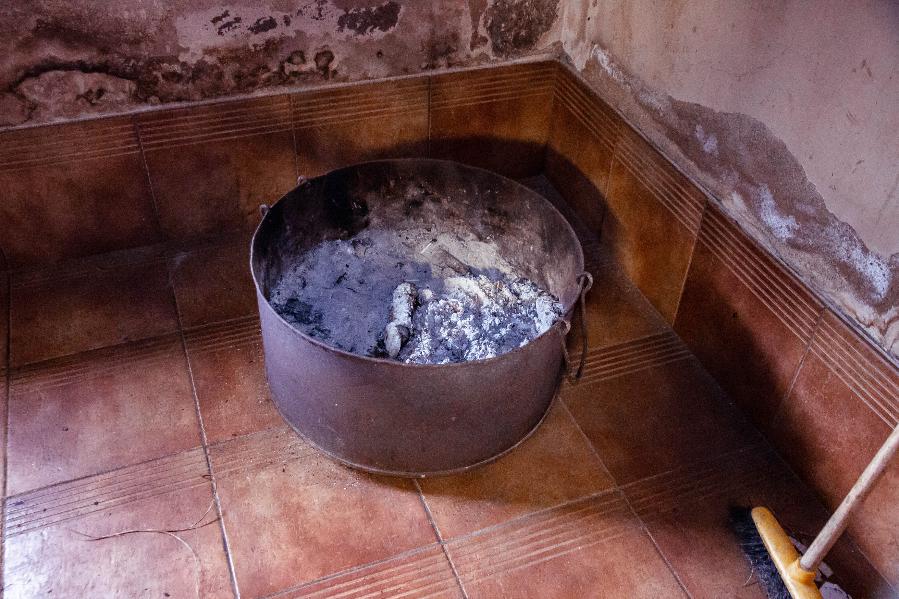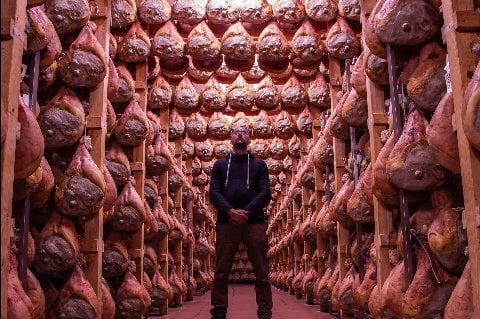While the concept of preserving meat might seem relatively straightforward, the history of this process is anything but.
As you will learn in this article, it spans thousands of years, many different cultures, and several meat preservation methods.
I’ve been blown away by the depth of cured meats, as much as this site is all about sharing my passion and teaching others how to do simple or complex meat curing. Cured meats represent a cornerstone of human development as well as exploration of the world.
History of Preserving Meat
In Mesopotamia, around 3000 BC, it was recorded that meat and fish were preserved in sesame oil, dried, and salted to store them for when food was scarce. By 200 BC, salt curing was common in Greece and popular in the Roman Empire. Significant advancements were made by the nineteenth century to refine the preservation of cured meat.
Here is a summary then further details:
- Homer Era (850 BC):
- During the time of Homer, preservation methods for meat were limited but existed. Ancient Greeks often relied on drying, smoking, and salting as basic preservation techniques.
- Salting was a standard method involving the application of salt to the meat to draw out moisture and inhibit bacterial growth.
- Ancient Rome (509 BC – 476 AD):
- The Romans further developed and refined meat preservation techniques.
- Salting continued to be a popular method, with the Romans using a combination of salt and sometimes other herbs or spices to enhance flavor.
- Drying and smoking were also prevalent methods, especially for preserving fish.
- Early Christian Era (1st – 4th centuries AD):
- The spread of Christianity had a significant impact on dietary practices, including meat consumption and preservation.
- Fasting periods like Lent influenced the need for preserved foods, increasing the emphasis on curing techniques.
- Monastic communities played a role in developing and preserving culinary traditions, including meat curing.
- Medieval Period (5th – 15th centuries):
- Curing methods became more sophisticated during the medieval period.
- Monasteries continued to be centers for culinary innovation, with monks experimenting with various herbs and spices to improve the flavor of cured meats.
- Techniques such as air-drying and fermentation gained popularity.
- Late Middle Ages and Renaissance (14th – 17th centuries):
- The Renaissance revived interest in classical knowledge, including culinary arts.
- European explorations and trade brought new spices and curing methods to the continent, further diversifying preservation techniques.
- Smokehouses became more common, and using different wood for smoking added distinct flavors to cured meats.
- Roman Empire (27 BC – 476 AD):
- The Romans, known for their culinary sophistication, continued to refine and expand meat preservation techniques.
- Apicius, a Roman cookbook from the 4th or 5th century AD, contains recipes and methods for preserving meat, including the use of salt, smoking, and various spices.
You can see that meat curing evolved through the ages.
Let’s take a deeper look into the history of preserving meats.
Then, I’ll cover the importance of salt and cold smoking in meat curing (two vital aspects).

Homer 850 BC & Preserving Meat
In 850 BC, during the time of Homer, the curing process was refined greatly. This is the first instance in which we can be sure nitrates were used during the curing process.
They didn’t know then that the nitrates and nitrites they used were helping and contained in certain types of salt or saltpetre.
Although it’s unknown when nitrites were first used, nitrates have been used since the time when Homer lived.
It wasn’t until the 20th century that we understood the importance of using nitrates or nitrites in curing; for at-home use, it’s an optional step, depending on the process.
They are used to preserve the color and flavor of the meat. It also helps certain unwanted bacteria.
Roman Empire

It was the Romans who first noticed that nitrates preserve the color of the meat, keeping it red longer. However, they didn’t realize it was the nitrates that were contributing to this. As mentioned above, this wasn’t known until the 20th century.
The Romans learned of salt curing from the Greeks.
Saltpeter, which is the nitrate used in salt curing, kept the meat pink during the curing process. Saltpeter is the material that was used in the time of Homer, in 850 BC, as mentioned above.
Interestingly enough, nitrates turn into nitrites when used in curing. Common nitrate and nitrite ingredients are potassium or sodium nitrate.
In the Roman Empire, the butchers would preserve their meats in an interesting way.
They would sprinkle the boned meat with salt and leave it to dry. The salt would pull the moisture from the meat and inhibit the water activity. It was then dried to a certain point.
Once this was finished, the Romans would sprinkle more salt. They put the meat pieces into containers and ensured they didn’t touch each other.
These containers were previously used for vinegar and oil. After the meat was in the container, they covered it with sweet wine and straw. They placed the container in a cool place to store at the end of the process.
Once they wanted to eat the meat, they would boil it in milk first and then water. This method helped remove the salt from the meat.
They would also use an alternative method that didn’t use salt at all. They soaked the meat in honey, placed it in an air-tight container, and stored it in a cool place for the winter.
Christians Made Salami
Salami is a type of cured meat made from pork. It’s actually a fermented salt-cured sausage. It’s difficult to pinpoint when salami first showed up in our history. However, its origins can be traced back to before ancient Rome.
There’s some debate about whether or not Christians made salami or not.
The Bible had made dietary laws in place in the Old Testament. However, those laws were changed in the New Testament when Saint Peter had a vision from God stating all foods to be clean.
Salt the Key to the History of Meat Curing
One of the biggest concerns regarding food going bad is the bacteria.
If left alone, bacteria will grow quickly in meat, even when kept in a refrigerator.
Our ancestors discovered that salt is a key component in keeping that bacteria away. Bacteria need moisture to grow. Salt prevents that by pulling the moisture or inhibiting the meat to slow water activity.
Without moisture, it makes it difficult for unwanted bacteria to get into the meat. That doesn’t make it last forever, but it can certainly last long.
It is not uncommon to see Spanish styles of salt dry-cured Iberian pig Jamon, up to 6 years of hanging/drying at an ambient temperature.
Under sail, the boats needed a way to preserve meat for long voyages; salted meat was common and integral to the diet of the explorers and sailors.
Major Factors Regarding Meat Curing History
Cold Smoking to Dry Meat & Preserve
Cold smoking is an old form of preserving meat without the use of heat, hence the name.
Typically, the meat will be cured before it’s smoked, as smoking the meat is generally used for flavor; it also holds anti-bacterial and anti-fungal properties (and keeps the flies off).
However, smoking the meat does add another layer of protection against those pesky bacteria mentioned earlier.
Cold smoking is different; when you are cold smoking meat, you need to keep the temperature below 86°F (30°C) – things like fish actually start cooking around this temperature).
This can be difficult to do; if the temperature is too hot, you’ll cook the meat instead of preserve it. I talk about certain ways and simple tools in my guide to cold smoking.
While it may be a tasty dinner, that isn’t the goal. A suggestion would be to keep your heat source separated from the meat.
The purpose of cold smoking is the same as salt curing or drying out the meat. Do your cold smoking on a cool night with low humidity, and your meats will be well preserved.
I’ve written a complete guide on cold smoking, whether its cheese, cream, meat or anything you want to cold smoke here is the post.
Salumi & Salami – Italian Cured Meat Classics
Salami and Salumi actually originated in Italy. As mentioned, it’s difficult to know exactly when this happened. We just know where it happened.
There is quite a variety when it comes types of salumi (this link I wrote is about salami vs salumi!)
Salumi Includes::
- Prosciutto
- Pancetta
- Spalla
- Lardo
- Lonza
- Coppa
- Guanciale
- Braesola
- All types of Salami
Classic French Charcuterie
The word charcuterie is French. It derives from the words chair, meaning “cooked,” and cuit, meaning “flesh.”
French charcuterie is
French charcuterie first began in the 15th century when shop owners needed a way to draw in customers.
Back then, they weren’t allowed to sell uncooked pork, so they would hang the meats in the windows, bringing in customers and actually preserving (article on easiest ways to preserve I wrote) the meats at the same time.
The items needed to make a classic French charcuterie are extensive, but below, you’ll find a list of the meats you’ll find on one of these boards:
- Pâté – This is a paste made from ground meats and organs, such as chicken or liver.
- Terrine – This is similar to the pâté, except that it’s been cooked in an oven.
- Mousse – This is another paste made from ground meats, but it’s been more finely ground.
- Rillettes – This is meat that’s been slow-cooked and preserved fat after being shredded.
- Boudin – This is a kind of sausage that has pig’s blood added to it.
- Saucisson – These are salt-cured sausages.
- Jambon – This is a variety of thin-sliced, cured hams. There are different options with this, such as cooked ham, cured for less than four months or some for more than four months, as well as smoked and cured ham.
For beginners of curing meat and charcuterie, I wrote some basics here.
Summary
The history of cured and preserved meats is long and dates back to 3,000 BC. Even when those living back then didn’t know the benefits of salt or nitrates, they were able to develop a practice that is still used today. Hopefully, this has been an interesting look at the history of preserved and cured meats.
Here is a link to some indigenous meats preserved in novel ways!
Also, there is some interesting detective work and speculation about meat curing, salt, and mummifications as the correlating factor – check out this blog to dive into some theory around this!

Tom Mueller
For decades, immersed in studying, working, learning, and teaching the craft of meat curing, sharing the passion and showcasing the world of charcuterie and smoked meat. Read More
